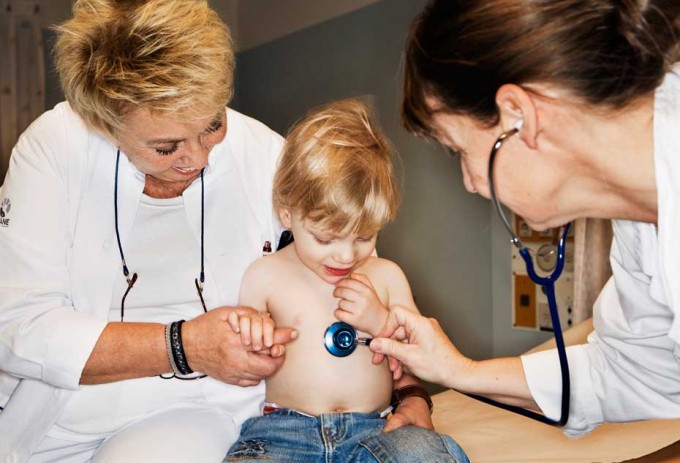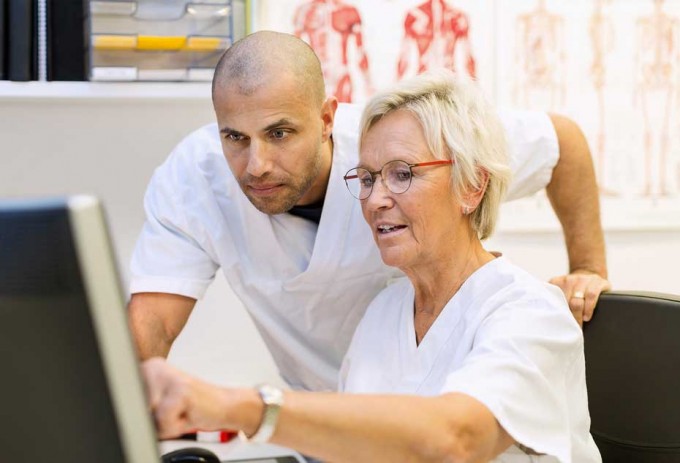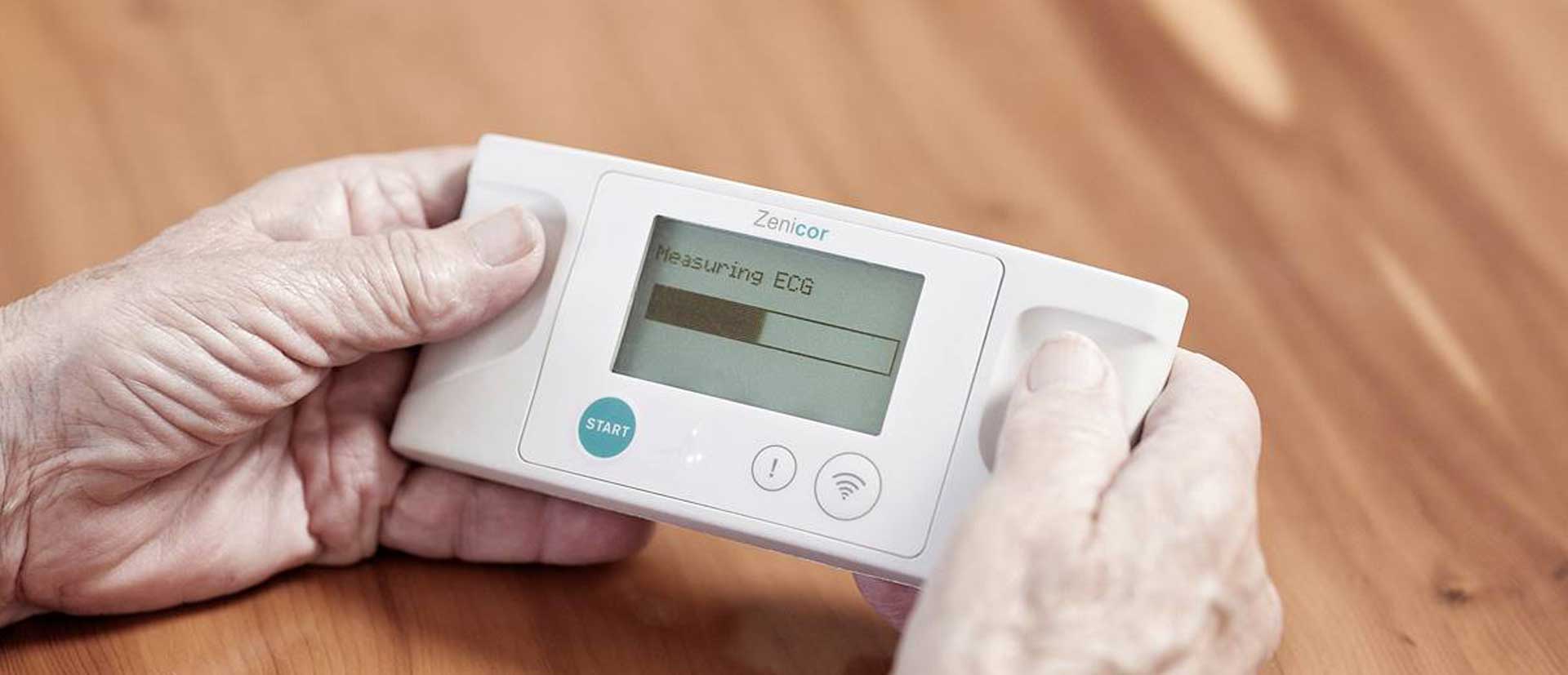
A unique system to detect and diagnose atrial fibrillation and other arrhythmias simply and cost-effectively.
The Swedish health system is characterized by continuous increases in specialization, with improved treatment methods in all areas. But increased specialization can also make it difficult to offer properly integrated care and treatment for patients with co-morbidities. We regard an increasingly patient-centered approach to care and efforts to meet patients’ individual needs as extremely important in meeting this challenge.
Sweden has been attempting to achieve increased patient influence for a number of years now, and a new Patient Act came into force in 2015, aimed at strengthening and clarifying the patient’s position and promoting their integrity, self-determination, and participation. Legislation like this enables us to promote this developmental trend and to work more proactively with new methodologies that improve the quality of the communication and interaction with the patient.
This approach allows the patient to take an active role in planning and implementing their own care, treatment, and rehabilitation.
The Swedish health system is now moving from a model in which the patient is the passive recipient of medical intervention to one based on patient/care provider consensus. This approach allows the patient to take an active role in planning and implementing their own care, treatment, and rehabilitation. It ensures that health and medical care are based on a partnership between patients/carers and professional healthcare providers, in which the starting point is the patient’s case history. A joint care and treatment plan is drawn up from this base. The plan contains goals and strategies for implementation and for long- and short-term monitoring and follow-ups. One important innovation in the Act is that the patient can choose who provides their publicly financed primary care and outpatient specialist care from anywhere in Sweden.
There can be no doubt of the benefits to be gained from regarding health and medical care as a partnership between the patient/carer and professional healthcare providers. When the system takes advantage of the wealth of opportunities offered by technology we can work together to create better health and medical care. New technology will play an increasingly important role in such areas as self-diagnosis and self-care in the future.
E-health solutions play a major part in enabling this approach to be implemented. The “1177 Vårdguiden” website was established in 2013 and is already Sweden’s biggest service for the provision of health and medical care advice and guidance. There are, however, plans in place to expand it even further and to offer everyone the opportunity, for example, to read their own case notes, order tests that can be performed at home, obtain help with self-care, and book medical advice and follow-up appointments.
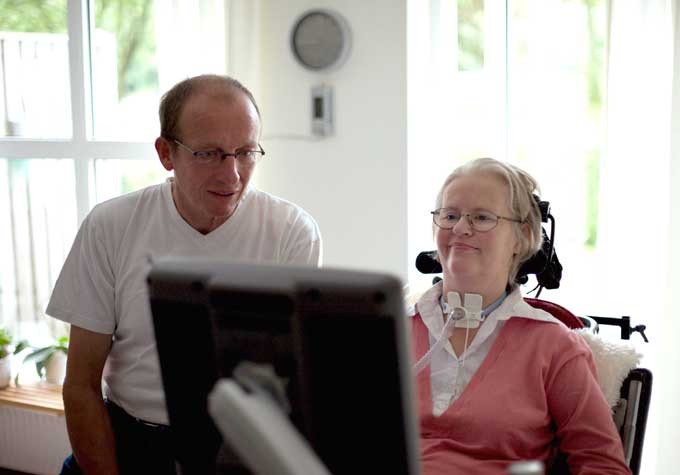
Another successful example is provided by Sweden’s first virtual treatment room, which opened in northern Sweden in 2013, and where local people can take their own samples and conduct their own treatment, e.g. checking their blood counts, sending off the results, receiving replies from their physicians, and adjusting their own medication, sometimes with the help of nurses or doctors, via a link. There are plans to establish a further 20 virtual treatment rooms in northern Sweden.
Digital services are obviously not appropriate for all conditions and all patients, and they will not replace traditional health and medical care, but focusing on personalized health and medical care by making use of online-based services and digital solutions is a must if we are to meet tomorrow’s challenges. Nor can there be any doubt that today’s patients are ready to take greater responsibility for their own care and treatment and to contribute to the development of the health and medical care system in general.
This insight is fundamental to the Programme 4D, which focuses on creating generic models for the most prevalent diseases and on making the patient, or individual, a central partner in information exchange and knowledge building. The Programme 4D (“D” as in diagnoses) is a collaborative programme between Karolinska Institutet and Stockholm County Council and makes healthcare more accessible to patients and to clinical research, as well as making clinical research more accessible to patients and healthcare. ICT-supported infrastructure will narrow the gaps in the patient’s clinical pathways in order to enable patient co-production in care such as prevention, risk-screening, diagnostics and treatment. The four diagnoses – arthritis, breast cancer, type II diabetes, and heart failure – were chosen on the basis of their high prevalence and health impact.
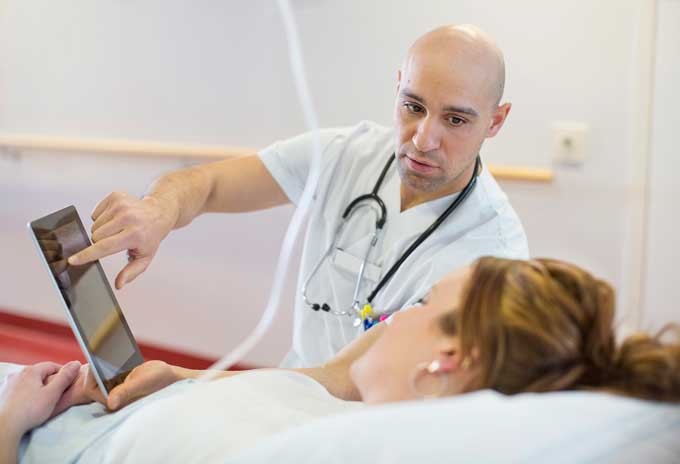
Personalized health and medical care also forms part of the effort being put into ensuring more equitable care for all. The Swedish government has established a Commission for Equitable Health & Medical Care that has been tasked with presenting proposals on ways in which health gaps in society can be reduced. The Commission’s primary focus will be on health differences between different socioeconomic groups, but it will also focus on health differences between the sexes, between people with disabilities, LBTQ people, people with a foreign background, members of national minorities, and the rest of the population. Health differences between those who are gainfully employed and those who are not part of the labor market will also be taken into account. The Commission will present the report and suggested proposals in 2017.
Photo credit: Zenicor Medical Systems, Tobii Technology
